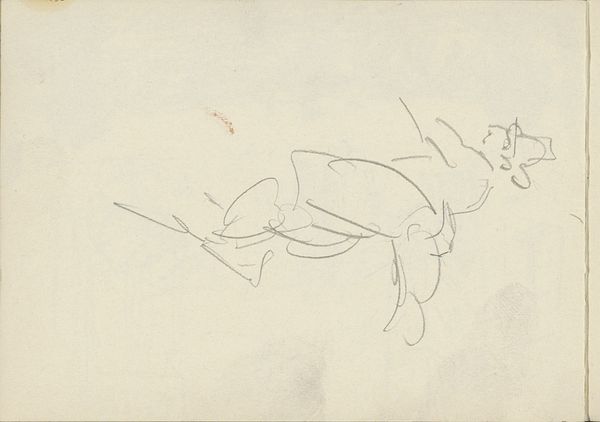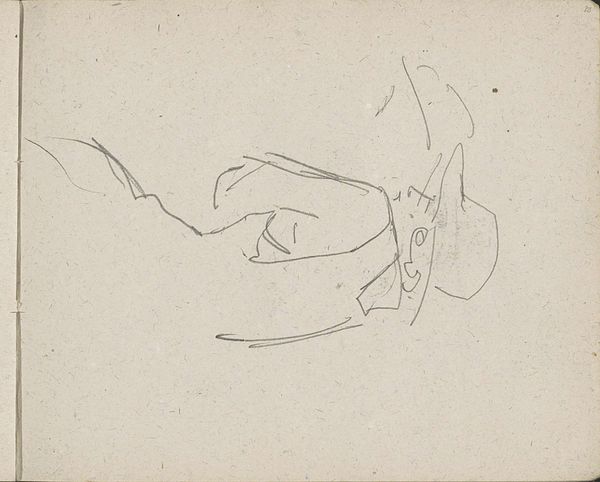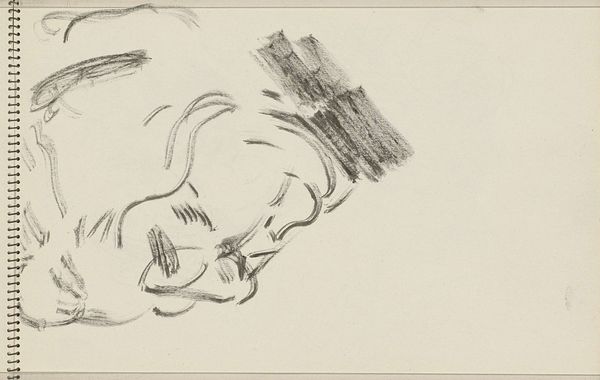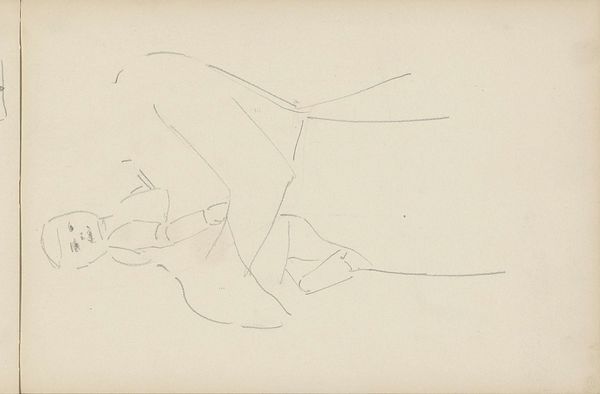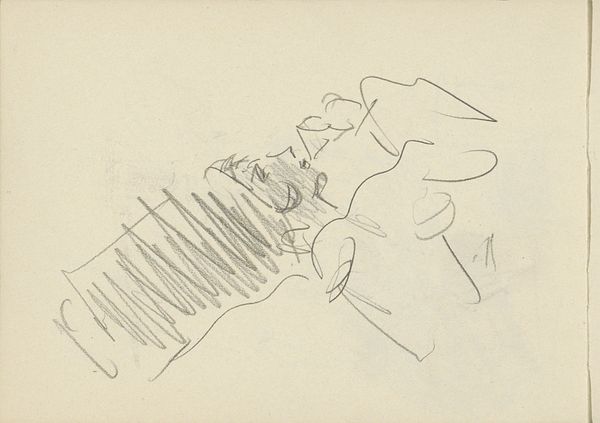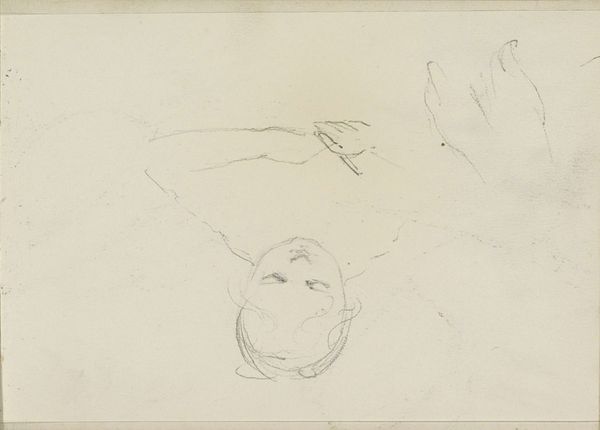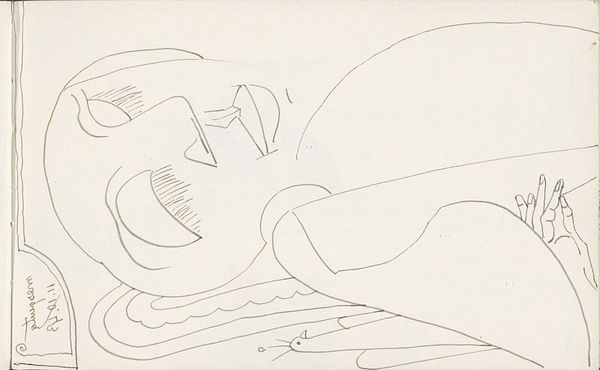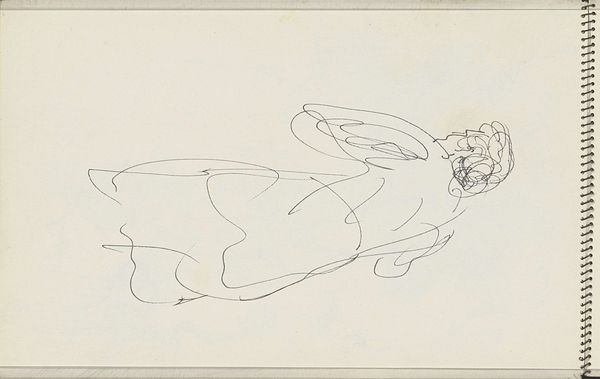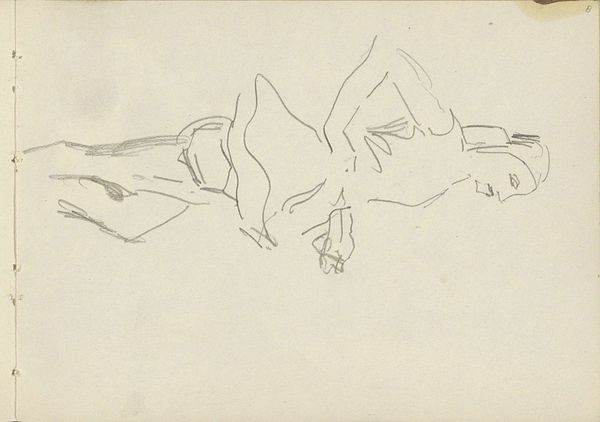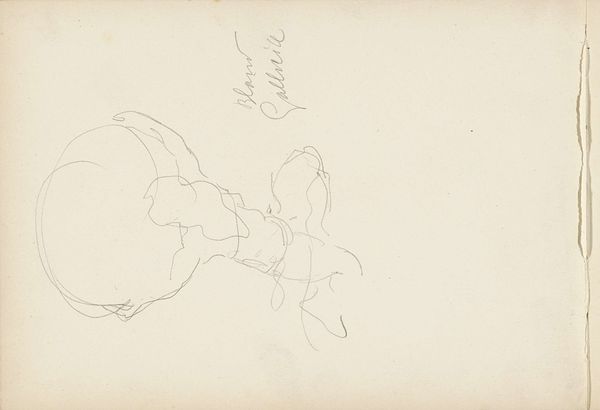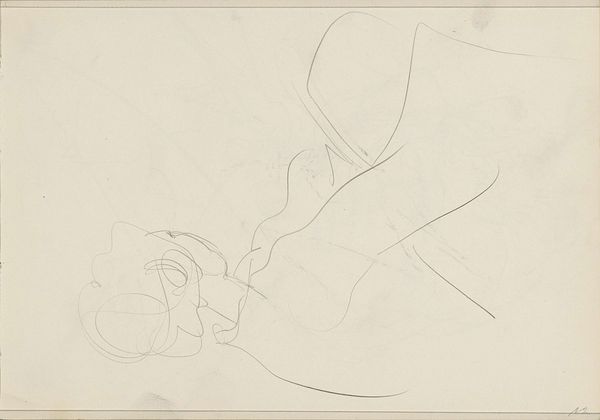
drawing, paper, pencil
#
portrait
#
drawing
#
amateur sketch
#
light pencil work
#
thin stroke sketch
#
incomplete sketchy
#
figuration
#
paper
#
personal sketchbook
#
idea generation sketch
#
ink drawing experimentation
#
pen-ink sketch
#
pencil
#
sketchbook drawing
#
initial sketch
Copyright: Rijks Museum: Open Domain
Editor: So, this is Carel Adolph Lion Cachet’s “Vrouw met een hoed,” or "Woman with a hat," a pencil drawing from somewhere around 1930 to 1938. It feels really... fleeting, you know? Like a whisper of a memory. What catches your eye in this sketch? Curator: Fleeting is a great word for it! It's like we've caught the artist in a private moment, quickly jotting down an impression. The hat becomes almost sculptural, doesn’t it? Like a strange crown atop the barely-there form. I find myself wondering about her gaze – is she looking out a window, lost in thought? Editor: I hadn't thought of the hat as sculptural, but I see what you mean. It’s the most defined part of the drawing. The rest is so… tentative. Does that suggest anything about the artist’s intentions? Curator: Possibly. It might be a study for a larger work, or perhaps it's simply about capturing a feeling, an essence. Look at how little detail there is – a few lines suggesting the curve of a shoulder, the angle of a neck. He’s leaving so much for our imagination to fill in. Which begs the question - what kind of story *do* you imagine for her? Editor: Hmmm. Maybe she’s a writer, pausing from her work, staring out at a rainy street for inspiration. Or maybe she’s waiting for someone, lost in her own world. It’s interesting how unfinished it is; that’s where its appeal lies for me. Curator: Precisely! It's that incompleteness that allows us to step into the picture, to become co-creators. That’s the lovely trick with a simple sketch: it invites us to collaborate with the artist's vision. Editor: Yeah, I can see that. I’m starting to appreciate how a sketch can be just as powerful as a fully realised painting, in its own way. Curator: Absolutely. It's not about perfection, it's about suggestion, about sparking a connection. Art isn't always about having all the answers laid out; sometimes, it's about asking the right questions, together.
Comments
No comments
Be the first to comment and join the conversation on the ultimate creative platform.
